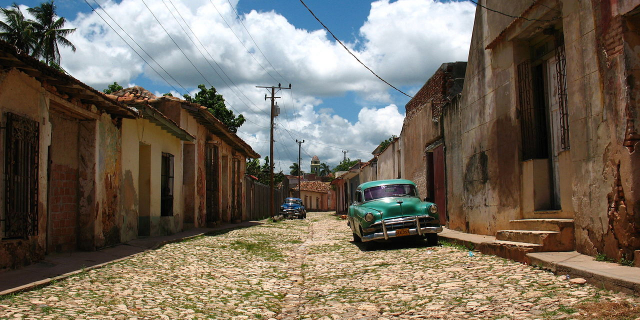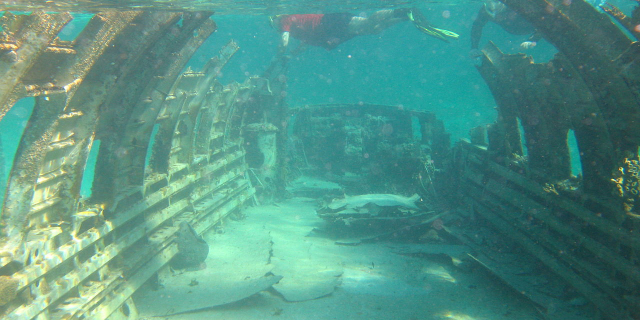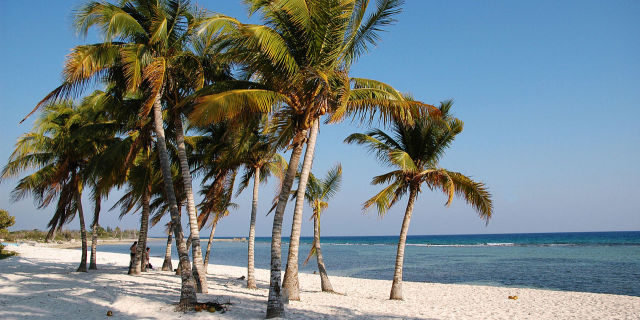Baracoa
Baracoa, whose full original name is: Nuestra Señora de la Asunción de Baracoa ("Our Lady of the Assumption of Baracoa"), is a municipality and city in Guantánamo Province near the eastern tip of Cuba. It was visited by Admiral Christopher Columbus on November 27, 1492, and then founded by the first governor of Cuba, the Spanish conquistador Diego Velázquez de Cuéllar on August 15, 1511. It is the oldest Spanish settlement in Cuba and was its first capital (the basis for its nickname Ciudad Primada, "First City").
The original inhabitants of the island were Taíno. They were almost eradicated by European diseases throughout the island. A local hero is Hatuey, who fled from the Spanish in Hispaniola and raised a Taíno army to fight the Spanish in Cuba. According to the story Hatuey was betrayed by a member of his group and sentenced to burn at the stake. It is said that just before he died a Catholic priest tried to convert him so he would attain salvation; Hatuey asked the priest if Heaven was the place where the dead Spanish go. When he received an answer in the affirmative he told the priest that he would rather go to Hell.
 Cruz de Parra
Cruz de ParraChristopher Columbus landed in Cuba in a place he named Porto Santo. It is generally assumed from his description that this was Baracoa, although there are also claims it was Gibara. But Columbus also described a nearby table mountain, which is almost certainly nearby El Yunque. He wrote in his logbook "the most beautiful place in the world ...I heard the birds sing that they will never ever leave this place...". According to tradition, Columbus put a cross called Cruz de la Parra in the sands of what would later become Baracoa harbor.
Around 15 August 1511 (the official foundation day) Diego Velázquez de Cuéllar was appointed the first governor of Cuba and built a villa here and named the place 'Nuestra Señora de la Asunción de Baracoa', thus making Baracoa the first capital of Cuba.[1] In 1518 it received the title of city and the first Cuban bishop was appointed here. As a result, several remains of the Spanish occupation can still be seen here, such as the fortifications El Castillo, Matachín and La Punta and the cemetery.
In the 16th and 17th centuries the isolated location made it a haven for illegal trade with the French and English. During the Jenkin's Ears War the newly organized Fixed Regiment of Havana appointed in 1744 as Baracoa war lieutenant Luis de Unzaga who managed, thanks to a network of confidants, Irish merchants and French military, to be warned of possible English attacks, which would allow Baracoa a certain peace and commercial prosperity between Saint-Domingue and Cuba despite the time of conflict.[2] At the beginning of the 19th century many Saint Dominicans fled here from the Haitian Revolution, who started growing coffee and cocoa.
 The Bay of Honey with El Yunque towering in the background
The Bay of Honey with El Yunque towering in the backgroundFrom the middle of the 19th century many expeditions of independence fighters landed here (including Antonio Maceo and José Martí) which greatly helped the independence from Spain in 1902.
Before the Cuban Revolution the only access was by sea, but in the 1960s a 120-kilometre-long (75 mi) road from Guantánamo named La Farola was built through the mountains, which was one of the showcases of the revolution. The road had already been planned by the Batista government, but never got built. The highest point of the road is at over 600 m and it passes over 11 bridges.































Add new comment